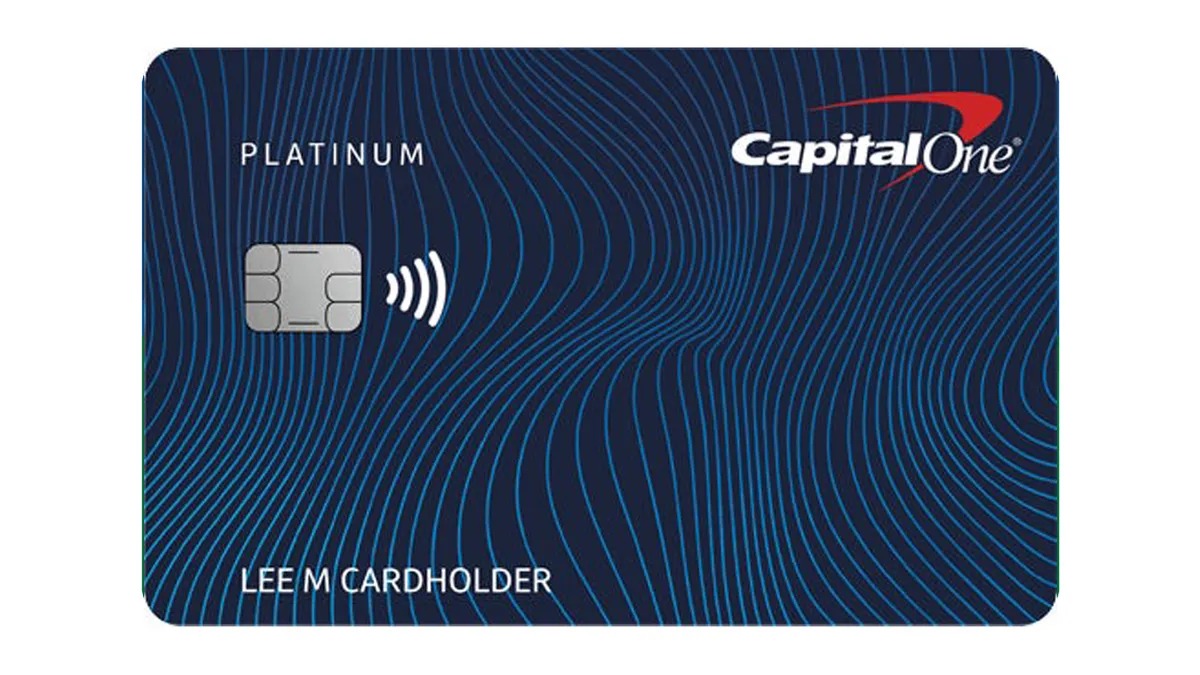

Finance
How Much Money To Put On Secured Card
Published: March 1, 2024
Learn how to manage your finances by understanding how much money to put on a secured card. Find expert tips and advice on building credit and financial stability.
(Many of the links in this article redirect to a specific reviewed product. Your purchase of these products through affiliate links helps to generate commission for LiveWell, at no extra cost. Learn more)
Table of Contents
**
Introduction
**
When it comes to building or rebuilding your credit, a secured credit card can be a valuable tool. However, determining the right amount of money to put on a secured card can be a critical decision with long-term implications. By understanding the factors involved and weighing the potential benefits and risks, you can make an informed choice that aligns with your financial goals.
In this comprehensive guide, we’ll delve into the considerations involved in determining how much money to put on a secured card. From understanding the concept of secured cards to exploring the potential advantages and drawbacks of depositing varying amounts, we aim to equip you with the knowledge needed to make a well-informed decision.
Whether you’re new to the world of credit or seeking to rebuild your financial standing, the insights provided here will help you navigate the process of determining the optimal amount to place on your secured card, empowering you to take charge of your financial future.
What is a Secured Card?
A secured credit card functions much like a traditional credit card, with one key distinction: it requires a cash deposit as collateral, which typically determines the card’s credit limit. This deposit serves as security for the card issuer in case the cardholder defaults on payments. Essentially, the deposit reduces the risk for the issuer, making it an accessible option for individuals with limited or damaged credit history.
Secured cards are often recommended for individuals who are new to credit or are working to rebuild their credit scores. By using a secured card responsibly, cardholders can demonstrate their creditworthiness and improve their credit standing over time. Moreover, many secured card issuers report cardholder activity to the major credit bureaus, which can positively impact the cardholder’s credit history when payments are made on time and balances are kept low.
It’s important to note that while secured cards offer a pathway to building or repairing credit, they differ from prepaid cards. With a prepaid card, the cardholder loads funds onto the card to use for purchases, whereas a secured card involves a deposit that determines the credit limit and is used as security against potential defaults.
Understanding the nature of secured cards is crucial when considering how much money to put on them. The deposit amount directly influences the credit limit, which in turn impacts purchasing power and credit utilization. By comprehending the fundamentals of secured cards, individuals can make informed decisions about the deposit amount that best suits their financial circumstances and goals.
How Much Money Should You Put on a Secured Card?
Deciding how much money to put on a secured card involves careful consideration of various factors. The deposit amount plays a pivotal role in determining the initial credit limit and can significantly impact the cardholder’s financial flexibility and credit-building potential.
One of the primary considerations when determining the deposit amount is to assess your financial capacity. It’s essential to evaluate how much you can comfortably afford to set aside as a deposit without straining your budget. While a higher deposit can result in a higher credit limit, it’s crucial to strike a balance that aligns with your financial circumstances and ensures responsible credit utilization.
Another factor to contemplate is your intended use of the secured card. If you plan to use the card for specific purposes, such as covering monthly expenses or making occasional purchases, you may need to calculate the appropriate deposit amount based on your anticipated spending patterns. By estimating your typical expenditures, you can gauge the suitable deposit that accommodates your needs without exceeding your budgetary constraints.
Furthermore, it’s beneficial to consider the impact of the deposit amount on your credit utilization ratio. This ratio, which compares your credit card balances to your credit limits, is a crucial factor in credit scoring. By keeping the utilization ratio low—ideally below 30%—you can positively influence your credit score. Therefore, determining a deposit amount that allows for comfortable spending while maintaining a low utilization ratio is a strategic approach to maximizing the credit-building potential of a secured card.
Ultimately, the ideal deposit amount for a secured card is contingent on your individual financial circumstances, spending habits, and credit-building objectives. By carefully assessing these factors and understanding the implications of the deposit amount, you can make a well-informed decision that sets the stage for responsible credit usage and positive credit advancement.
Factors to Consider
When determining the deposit amount for a secured card, several key factors warrant careful consideration to make an informed decision that aligns with your financial goals and circumstances.
- Financial Capacity: Assess your financial capacity to determine how much you can comfortably afford to deposit without straining your budget. Consider your current income, expenses, and savings to gauge an amount that aligns with your financial stability.
- Credit Limit Impact: Recognize that the deposit amount directly influences the initial credit limit of the secured card. A higher deposit typically results in a higher credit limit, which can enhance your purchasing power but requires a more substantial upfront commitment.
- Spending Patterns: Evaluate your typical spending patterns and intended use of the secured card. If you anticipate using the card for specific expenses or occasional purchases, factor in your expected spending habits when determining the deposit amount.
- Credit Utilization Ratio: Consider the impact of the deposit amount on your credit utilization ratio. Aim to maintain a low utilization ratio—preferably below 30%—to positively influence your credit score. Calculate a deposit amount that allows for comfortable spending while keeping the utilization ratio within favorable limits.
- Long-Term Goals: Align the deposit amount with your long-term financial goals. Whether you aim to build credit, establish responsible financial habits, or work towards specific milestones, ensure that the chosen deposit amount supports your overarching objectives.
- Budgetary Constraints: Factor in any budgetary constraints or financial obligations when determining the deposit amount. Strive to strike a balance that allows for responsible credit usage without imposing undue strain on your financial resources.
By carefully evaluating these factors and their implications, you can make a well-informed decision regarding the deposit amount for your secured card. Taking a holistic approach that considers your financial capacity, spending habits, and credit-building objectives will empower you to set the stage for responsible credit usage and positive financial progress.
Benefits of Putting More Money on a Secured Card
Opting to deposit a higher amount on a secured card can yield several compelling benefits that contribute to a more robust financial foundation and enhanced credit-building potential.
- Higher Credit Limit: Depositing more money on a secured card typically results in a higher credit limit, providing increased purchasing power and greater financial flexibility. This expanded credit capacity can accommodate a wider range of expenses and contribute to improved financial management.
- Lower Credit Utilization Ratio: A higher deposit amount can help maintain a lower credit utilization ratio, which is a key factor in credit scoring. By keeping the utilization ratio low—ideally below 30%—you can positively impact your credit score and demonstrate responsible credit usage.
- Enhanced Credit-Building Potential: With a higher credit limit and lower utilization ratio, depositing more money on a secured card can amplify the card’s credit-building potential. Responsible usage, coupled with a higher deposit, can expedite the improvement of your credit history and contribute to a more favorable credit profile.
- Expanded Financial Options: A higher credit limit affords increased financial options and can accommodate larger purchases or unexpected expenses. This expanded capacity can provide greater peace of mind and flexibility in managing various financial needs.
- Establishing Responsible Financial Habits: By committing a substantial deposit to a secured card, individuals can cultivate and demonstrate responsible financial habits. This proactive approach to credit management can lay the groundwork for long-term financial stability and prudent financial decision-making.
By depositing more money on a secured card, individuals can leverage these benefits to bolster their financial standing, optimize their credit-building efforts, and pave the way for improved financial opportunities in the future. While the decision to deposit a higher amount requires careful consideration, the potential advantages can significantly contribute to a more secure and promising financial outlook.
Risks of Putting Too Much Money on a Secured Card
While depositing a substantial amount on a secured card can offer various benefits, it’s essential to be mindful of potential risks associated with allocating an excessive deposit. Understanding these risks can help individuals make informed decisions that align with their financial circumstances and goals.
- Tied-Up Funds: Placing too much money on a secured card ties up a significant portion of funds that could be utilized for other financial goals or emergencies. This reduction in available cash can limit financial flexibility and may impede the ability to address unforeseen expenses or investment opportunities.
- Opportunity Cost: Allocating an excessive deposit to a secured card entails an opportunity cost, as the funds could potentially be utilized for investments, debt reduction, or other financial endeavors that yield higher returns or long-term benefits.
- Potential Loss: In the event of unforeseen circumstances or changes in financial priorities, a substantial deposit on a secured card may pose a risk of potential loss, especially if the funds could have been allocated to more versatile or lucrative investment avenues.
- Limited Diversification: Concentrating a significant amount of funds in a secured card deposit limits diversification within one’s financial portfolio. Diversification is a fundamental principle of sound financial management, and tying up a substantial sum in a secured card may hinder the ability to diversify investments and assets.
- Reduced Cash Flow: A sizable deposit on a secured card may reduce available cash flow, impacting day-to-day financial management and potentially necessitating adjustments to accommodate the tied-up funds.
By recognizing these potential risks, individuals can make informed decisions about the appropriate deposit amount for their secured card. While considering the benefits of a higher deposit is crucial, it’s equally important to assess the potential drawbacks and ensure that the chosen deposit aligns with one’s overall financial strategy and liquidity needs.
Conclusion
Determining the optimal amount of money to put on a secured card is a decision that warrants careful consideration, balancing various factors to align with your financial capacity and credit-building objectives. By evaluating your financial circumstances, spending patterns, and long-term goals, you can make an informed choice that sets the stage for responsible credit usage and positive financial progress.
While depositing more money on a secured card can offer benefits such as a higher credit limit, lower credit utilization ratio, and enhanced credit-building potential, it’s essential to be mindful of potential risks, including tied-up funds, opportunity cost, and limited diversification. By weighing these factors, individuals can strike a balance that maximizes the advantages of a higher deposit while mitigating potential drawbacks.
Ultimately, the decision regarding the deposit amount for a secured card should align with your overall financial strategy and liquidity needs. By leveraging the insights provided in this guide and considering the implications of the deposit amount, you can embark on a path of responsible credit management and prudent financial decision-making.
Whether you’re new to credit, rebuilding your financial standing, or seeking to cultivate responsible financial habits, the deposit amount for a secured card represents a pivotal step in your journey towards a more secure and promising financial future. With a well-informed decision, you can harness the potential of a secured card to build and strengthen your credit, paving the way for enhanced financial opportunities and long-term stability.














